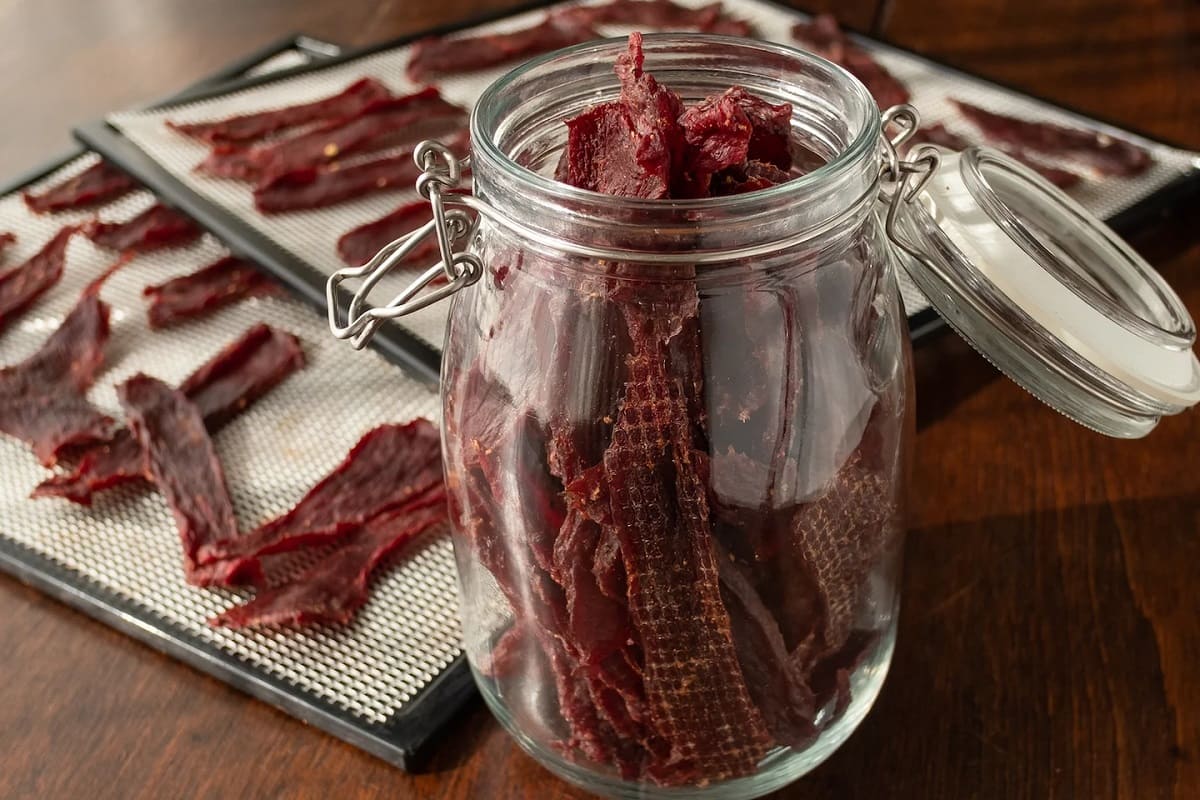

Articles
How To Store Deer Jerky
Modified: December 7, 2023
Learn the best methods to store deer jerky for long-term freshness. Read our informative articles on how to properly store and preserve your delicious deer jerky for maximum flavor and quality.
(Many of the links in this article redirect to a specific reviewed product. Your purchase of these products through affiliate links helps to generate commission for Storables.com, at no extra cost. Learn more)
Introduction
Deer jerky is a delicious and nutritious snack that is enjoyed by many outdoor enthusiasts. Whether you have hunted and harvested your own deer or purchased venison from a trusted source, knowing how to properly store your deer jerky is essential to keep it fresh and enjoyable for an extended period of time. In this article, we will guide you through the steps of storing deer jerky to ensure its quality and flavor are preserved for as long as possible.
Deer jerky is a popular choice among hunters due to its convenience, portability, and long shelf life. It is a great source of protein, low in fat, and packed with energy. However, improper storage can lead to spoilage, affecting the taste and texture of the jerky. By following the steps outlined in this guide, you can maintain the quality of your deer jerky and have a tasty and satisfying snack to enjoy on your outdoor adventures.
Whether you plan to store your deer jerky for short-term or long-term periods, it is important to take the necessary precautions to keep it fresh and safe to eat. The following steps will guide you through the process of storing your deer jerky to ensure optimal freshness and flavor:
Key Takeaways:
- Preserve the Flavor: Properly store deer jerky in airtight containers, refrigerate in hot climates, and divide into portions for extended freshness and delicious, chewy snacks.
- Versatile Enjoyment: Rehydrate deer jerky for softer textures, use in soups or stews, and savor the juicy, tender meat in various culinary creations.
Read more: How To Make Deer Jerky In A Dehydrator
Step 1: Choosing the Right Cut of Deer Meat
When it comes to making deer jerky, selecting the right cut of meat is crucial. The texture and tenderness of the jerky largely depend on the cut you choose. Here are some cuts of deer meat that are well-suited for making jerky:
- Top Round: This cut is lean and works well for jerky. It is relatively easy to work with and yields flavorful and chewy jerky.
- Bottom Round: Another lean cut, the bottom round is often used for jerky. It has a rich flavor and can be sliced thinly for optimal results.
- Sirloin Tip: This cut is slightly fattier compared to the top and bottom round, but it still works well for jerky. It offers a tender and juicy texture.
When selecting your cut of deer meat, ensure that it is fresh and of high quality. Look for meat that is deep red in color without any signs of discoloration or foul odor. If you have harvested the deer yourself, properly field dressing and processing the meat is essential to preserve its quality for jerky making.
Before slicing the meat for jerky, it is important to remove any connective tissue or silver skin that may be present. This will help improve the texture of the jerky and ensure even drying. It is recommended to slice the meat against the grain, resulting in a more tender jerky.
It is worth noting that different cuts of deer meat may require slightly different marinating and drying times. Keep this in mind when preparing your jerky, as it may impact the overall flavor and texture.
Once you have chosen and properly prepared your cut of deer meat, you are ready to move on to the next step of making delicious deer jerky.
Step 2: Preparing the Meat for Jerky
After selecting the right cut of deer meat, the next step in making tasty deer jerky is properly preparing the meat for the marinating process. Here’s how to get your meat ready:
- Trim the Fat: It is crucial to remove any visible fat from the deer meat before marinating. Fat can spoil faster and can also make the jerky turn rancid more quickly. Plus, fat doesn’t dehydrate well, so removing it ensures a better texture for your jerky.
- Slice the Meat: Slice the deer meat into thin, even strips. The thickness should be around 1/8 to 1/4 inch for optimal drying. It’s important to cut the strips against the grain to make the jerky more tender. You can use a sharp knife or a meat slicer for this step.
- Remove Any Connective Tissue: Take the time to check for any remaining connective tissue and silver skin on the meat strips. These can be tough and chewy, so trim them off using a sharp knife.
By properly preparing the deer meat, you ensure that the jerky will have a consistent texture and be more enjoyable to eat.
It’s important to note that while marinating will add flavor to the jerky, the meat itself should be well-seasoned and seasoned consistently. This is because the jerky will lose moisture during the drying process, which can intensify the flavors. You can opt for a simple dry rub or a flavorful marinade to enhance the taste of your deer jerky.
Now that your deer meat is prepared, let’s move on to the next step of marinating the meat to infuse it with delicious flavors.
Step 3: Marinating the Deer Meat
The marinating process is where you can truly infuse your deer jerky with incredible flavors. Marinating helps to tenderize the meat and adds depth to the overall taste. Follow these steps to marinate your deer meat:
- Select a Marinade: There are endless options for marinades when it comes to deer jerky. You can choose a pre-made marinade from the store or make your own using a combination of ingredients like soy sauce, Worcestershire sauce, brown sugar, garlic powder, onion powder, and various spices. Be sure to experiment and find a flavor profile that you enjoy.
- Coat the Meat: Place the sliced deer meat in a sealable plastic bag or a glass container. Pour the marinade over the meat, ensuring that all pieces are fully coated. Squeeze out as much air as possible from the bag or cover the container with plastic wrap to prevent oxidation.
- Marinate in the Refrigerator: Refrigerate the meat in the marinade for at least 12 hours or overnight. This allows the flavors to penetrate the meat and tenderize it. You can also marinate the meat for up to 24 hours for a stronger flavor profile.
- Occasionally Rotate the Meat: During the marinating process, gently rotate the bag or stir the meat in the container to ensure that every piece gets an even distribution of the marinade. This will result in a more consistent flavor.
Remember to handle the marinated meat with clean hands and utensils to prevent any cross-contamination. It’s also a good idea to place the bag or container on a tray or in a shallow dish to catch any potential leaks or drips.
Once the marinating time is complete, you’re ready to move on to the next step of dehydrating the marinated deer meat to transform it into flavorful jerky.
Store deer jerky in an airtight container or resealable bag to keep it fresh. You can also use a vacuum sealer to remove any excess air and prolong its shelf life. Keep it in a cool, dry place away from direct sunlight.
Step 4: Dehydrating the Jerky
Dehydration is a key step in making deer jerky as it removes the moisture from the meat, resulting in a chewy and shelf-stable snack. Here’s how to dehydrate your marinated deer meat:
- Select a Dehydrator: There are various dehydrators available on the market, ranging from basic models to more advanced ones with temperature control. Choose a dehydrator that suits your needs and budget.
- Prepare the Dehydrator: Read the instructions provided with your dehydrator to familiarize yourself with its settings and guidelines. Assemble the dehydrator trays and make sure they are clean and dry.
- Arrange the Meat: Take the marinated deer meat out of the refrigerator and pat it dry with paper towels. Arrange the meat strips on the dehydrator trays, making sure they do not overlap. Leave a little space between the strips for better air circulation.
- Set the Temperature and Time: Set the dehydrator temperature to around 160°F (70°C), or as recommended by the manufacturer. The drying time can vary depending on the thickness of the meat and the moisture content of the marinade. Typically, deer jerky takes around 4 to 6 hours to dehydrate thoroughly.
- Rotate the Trays: Rotate the trays halfway through the drying process to ensure even drying. This helps to avoid any potential hotspots in the dehydrator.
- Check for Doneness: Check the jerky periodically by removing a small piece and allowing it to cool. It should be firm and dry to the touch but still slightly pliable. If the jerky bends without breaking, it needs more drying time. If it snaps, it may have become too dry.
Keep in mind that different dehydrators may vary in terms of temperature and drying times, so always refer to the manufacturer’s guidelines for best results. Additionally, factors such as humidity levels and thickness of the meat can impact the drying time as well.
Once your deer jerky is fully dehydrated, it’s time to move on to the next crucial step – storing it properly to ensure its freshness and longevity.
Read more: How To Store Homemade Jerky
Step 5: Storing the Deer Jerky
Proper storage is essential to maintain the quality and freshness of your homemade deer jerky. Follow these steps to ensure that your jerky stays delicious for an extended period:
- Cool the Jerky: After dehydrating the jerky, allow it to cool completely before storing. This helps to prevent moisture buildup inside the storage container.
- Choose the Right Container: Opt for an airtight container or resealable bags specifically designed for food storage. Ensure that the container is clean and dry to prevent any contamination or moisture absorption.
- Separate Into Portions: If you have made a large batch of deer jerky, consider dividing it into smaller portions. This will help maintain the freshness of the jerky as you only open and expose one portion at a time.
- Remove Excess Air: If using resealable bags, squeeze out as much air as possible before sealing. Removing excess air helps prevent moisture retention, which can lead to spoilage.
- Store in a Cool, Dark Place: Find a cool and dark spot in your pantry or cupboard to store the deer jerky. Exposure to heat, light, and humidity can accelerate the degradation process and negatively impact the quality of the jerky.
- Consider Refrigeration: If you live in a particularly hot and humid climate, or if you plan to store the jerky for an extended period, refrigeration can help prolong its shelf life. This is especially recommended if the jerky contains fats or oils.
By following these storage guidelines, you can enjoy your homemade deer jerky for up to several months. However, keep in mind that homemade jerky does not have the same preservatives as commercially packaged jerky, so it may have a shorter shelf life.
Now that you know how to store your deer jerky properly, you can confidently enjoy your flavorful and nutritious snack whenever you crave it.
Step 6: Properly Rehydrating Deer Jerky
While deer jerky is typically enjoyed as a dried and chewy snack, there may be times when you prefer a softer texture or want to incorporate the jerky into other dishes. Rehydrating deer jerky can bring back some moisture and tenderness to the meat. Here’s how to properly rehydrate your deer jerky:
- Select the Desired Method: There are a few different methods you can use to rehydrate deer jerky, depending on your preference and time constraints. Choose the method that suits your needs:
- Soaking in Liquid: Place the jerky in a bowl and cover it with a flavorful liquid such as broth, marinade, or even water. Allow the jerky to soak for about 30 minutes to a few hours, depending on the desired level of rehydration.
- Steaming: Arrange the jerky in a steamer basket and steam it over simmering water for a few minutes. This method can quickly rehydrate the jerky while preserving its flavors.
- Microwaving: Place the jerky on a microwave-safe plate and cover it with a damp paper towel. Microwave the jerky in short bursts, checking and flipping it frequently until it reaches the desired level of softness.
- Monitor the Rehydration Process: Check the jerky periodically while it is rehydrating to ensure it doesn’t become too soft or mushy. You want to achieve a balance between tenderness and maintaining the jerky’s texture.
- Use Rehydrated Deer Jerky: Once the jerky has reached your desired level of rehydration, it can be enjoyed in various ways. You can eat it as is, incorporate it into soups or stews, or use it as an ingredient in recipes that call for tender meat.
Remember that rehydrated deer jerky will have a slightly different texture and flavor compared to the original dried jerky. The rehydration process adds moisture back into the meat, making it more tender and juicy.
Experiment with different rehydration methods and find the one that suits your liking. Whether you prefer a softer texture or the traditional chewy jerky, properly rehydrating the deer jerky allows you to enjoy its versatility in different culinary applications.
With this final step, you have mastered the art of storing and rehydrating your homemade deer jerky. Now, it’s time to savor the delicious flavor and enjoy the fruits of your labor.
Conclusion
Storing and preserving deer jerky is an important part of ensuring that it remains fresh, flavorful, and enjoyable for a long period of time. By following the steps outlined in this guide, you can confidently make, store, and rehydrate your homemade deer jerky.
From choosing the right cut of deer meat to properly marinating and dehydrating the jerky, each step plays a crucial role in creating a delicious and shelf-stable snack. Remember to trim the fat, slice the meat against the grain, and remove any connective tissue for optimal texture. The marinating process infuses the flavors, while dehydrating removes moisture for a chewy and long-lasting result.
When it comes to storing deer jerky, always opt for an airtight container or resealable bags in a cool, dark place. Removing excess air and dividing the jerky into portions can help maintain its freshness. If necessary, refrigerate the jerky, especially in hot and humid climates or for long-term storage. And when you’re ready to rehydrate the jerky, choose the method that suits your preferences and enjoy the different textures and flavors that emerge.
By following these steps, you can confidently make, store, and rehydrate your deer jerky while preserving its taste and quality. Whether you’re an outdoor enthusiast, a jerky lover, or someone looking for a protein-packed snack, homemade deer jerky is a delicious and nutritious treat.
So, gather your favorite cuts of deer meat, apply your preferred marinade, and embark on the journey of creating your own flavorful deer jerky. With proper storage and rehydration techniques, you can enjoy the fruits of your labor whenever the craving strikes, whether it’s on a hunting trip, a camping adventure, or simply as a tasty snack at home.
Now, go forth and delight in the mouthwatering flavors of your homemade deer jerky!
Frequently Asked Questions about How To Store Deer Jerky
Was this page helpful?
At Storables.com, we guarantee accurate and reliable information. Our content, validated by Expert Board Contributors, is crafted following stringent Editorial Policies. We're committed to providing you with well-researched, expert-backed insights for all your informational needs.
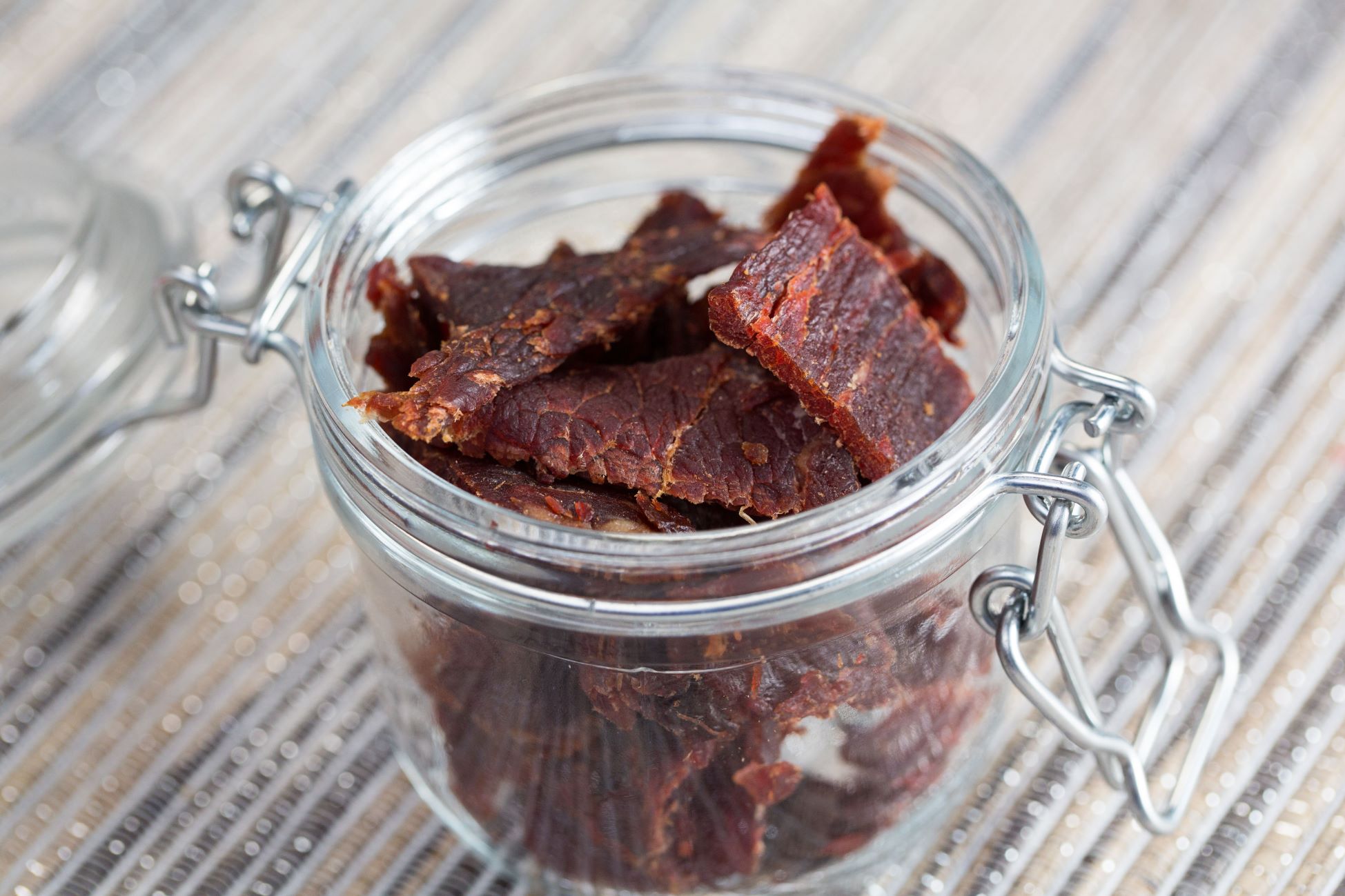
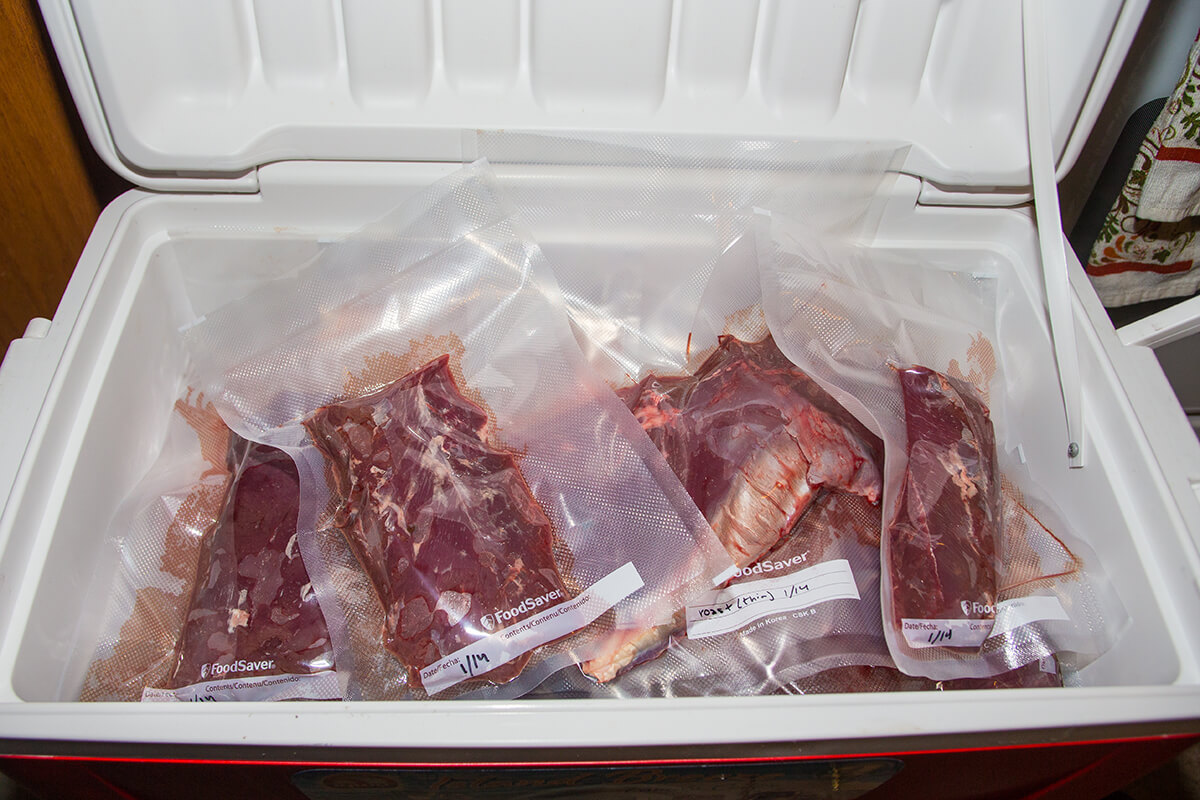
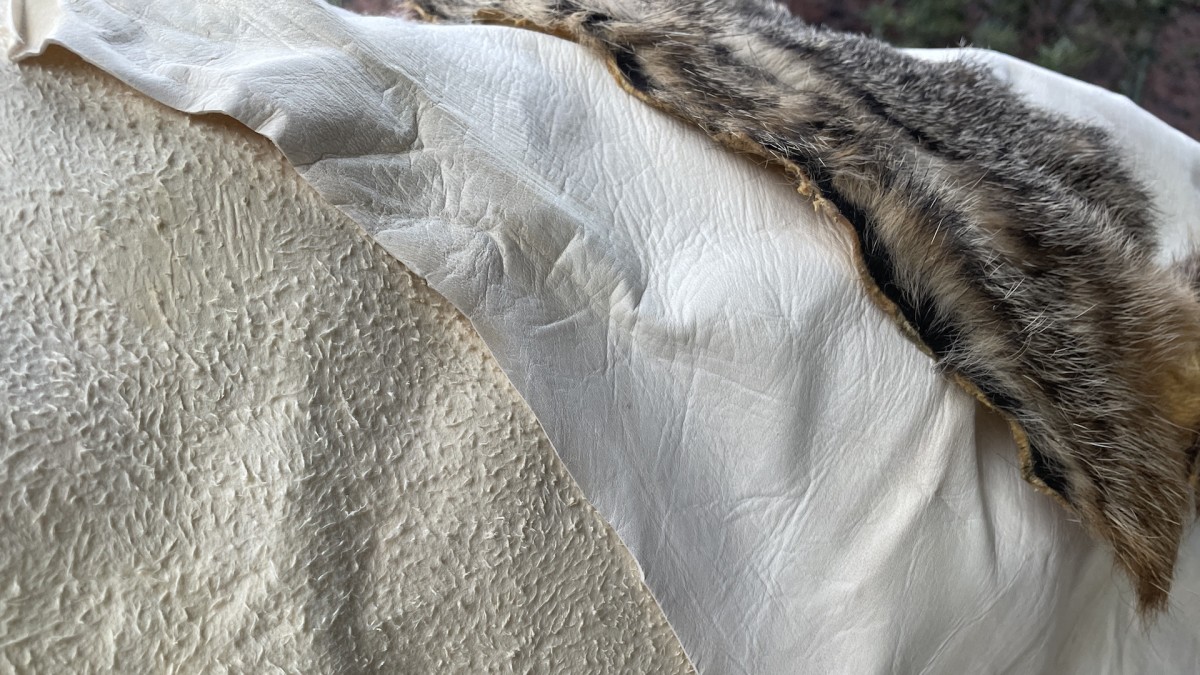
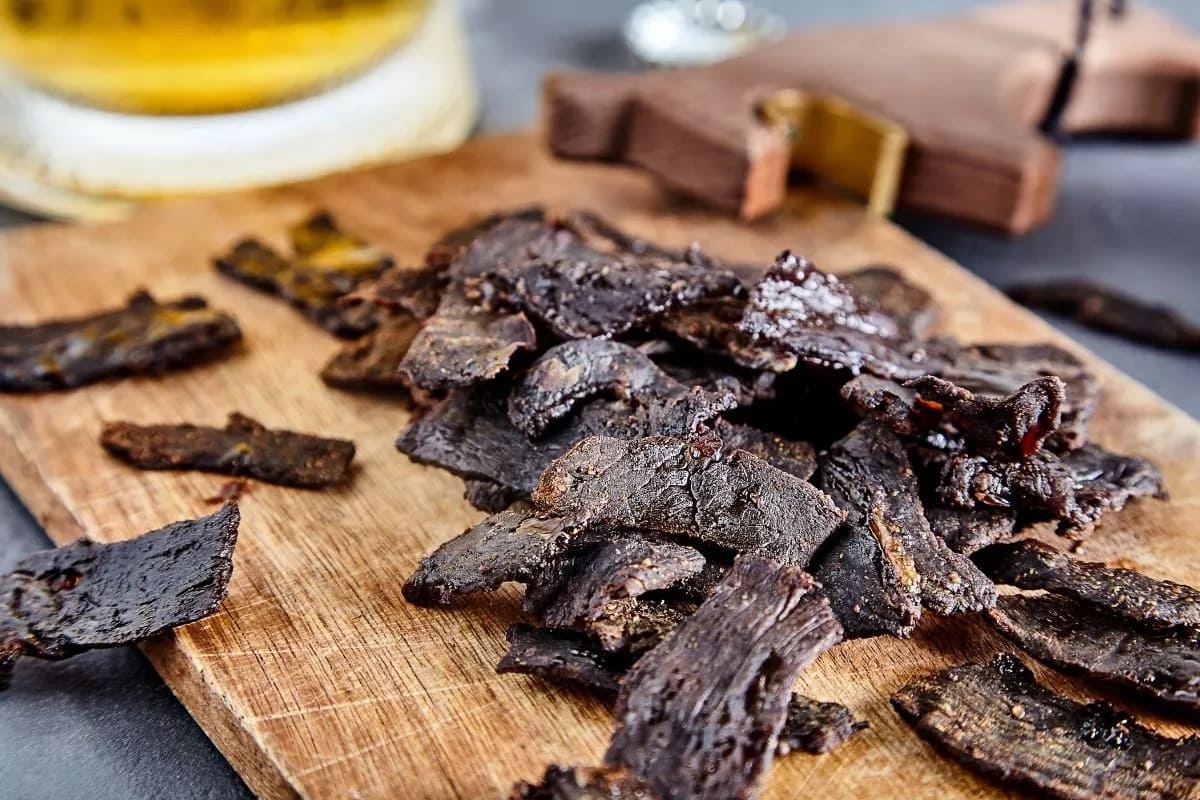
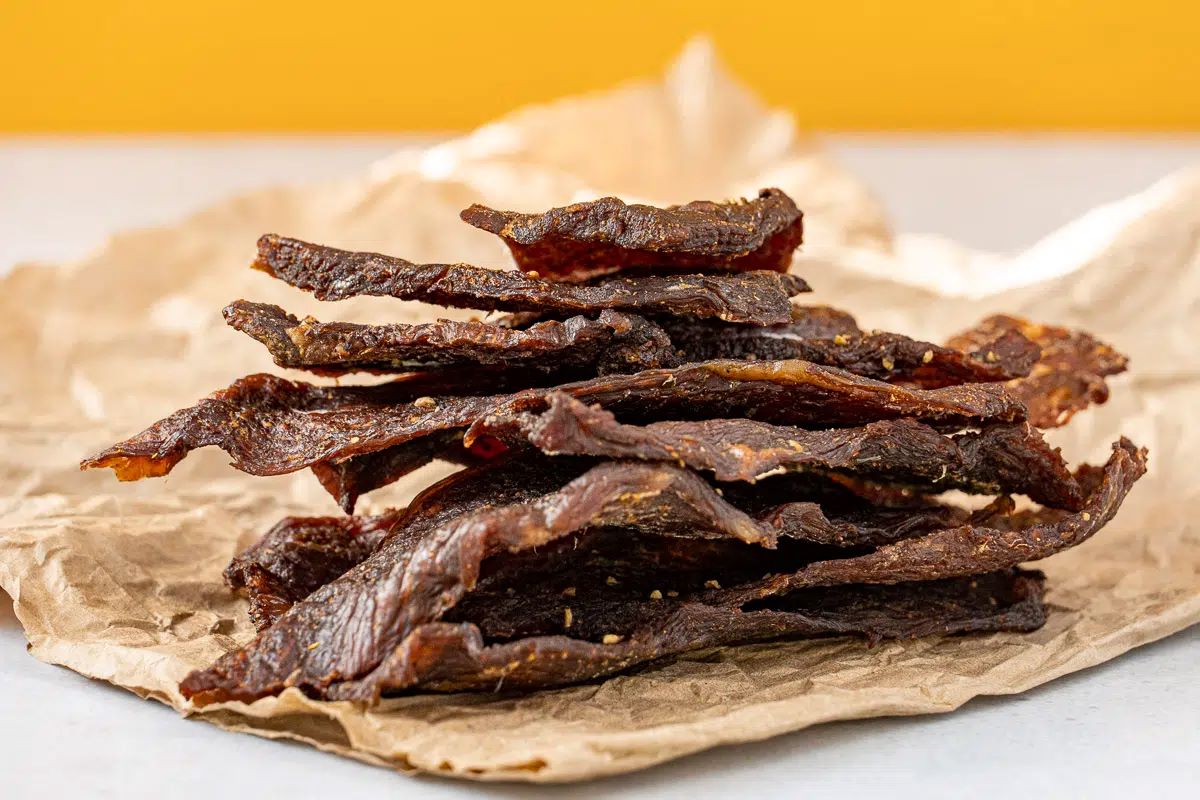
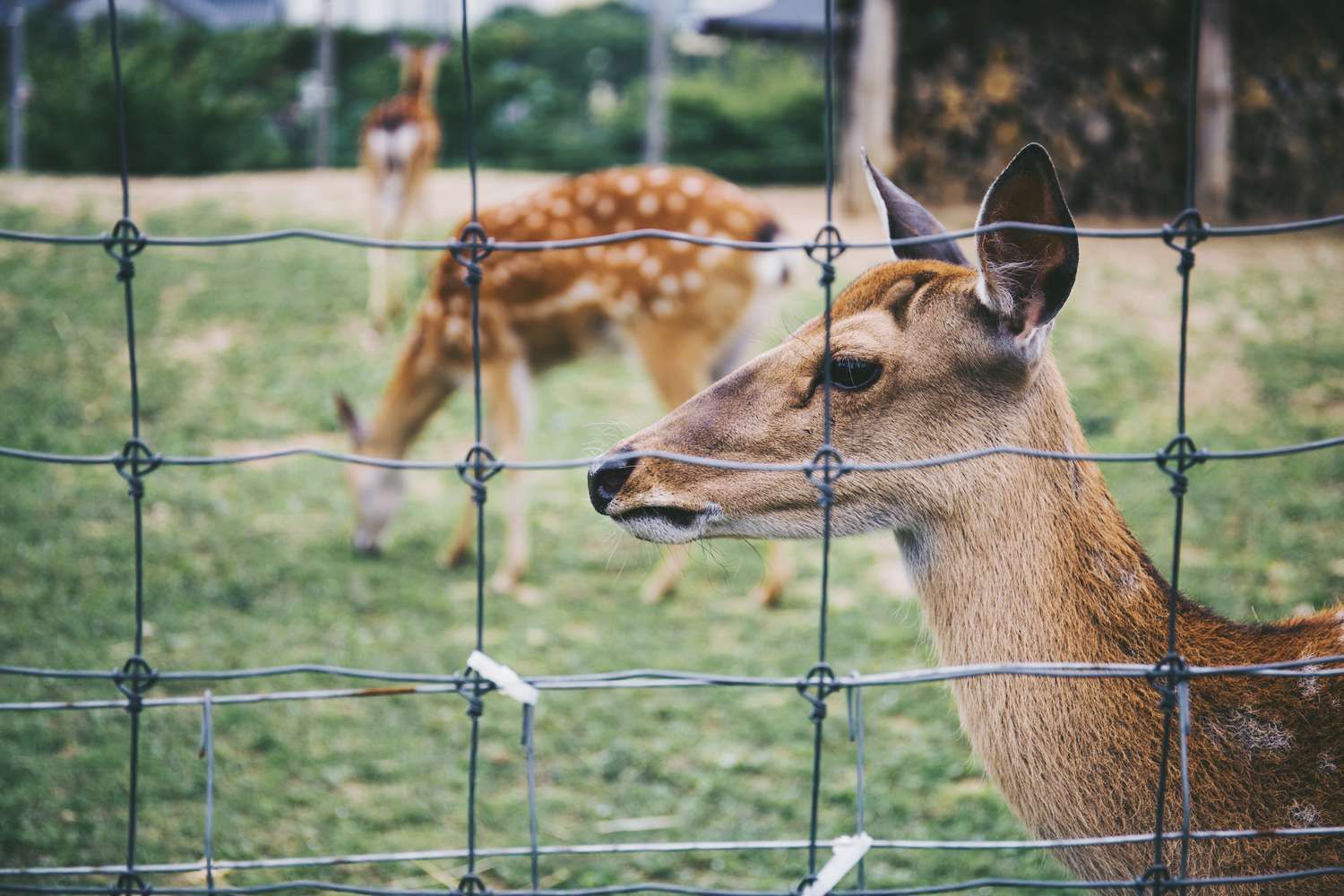
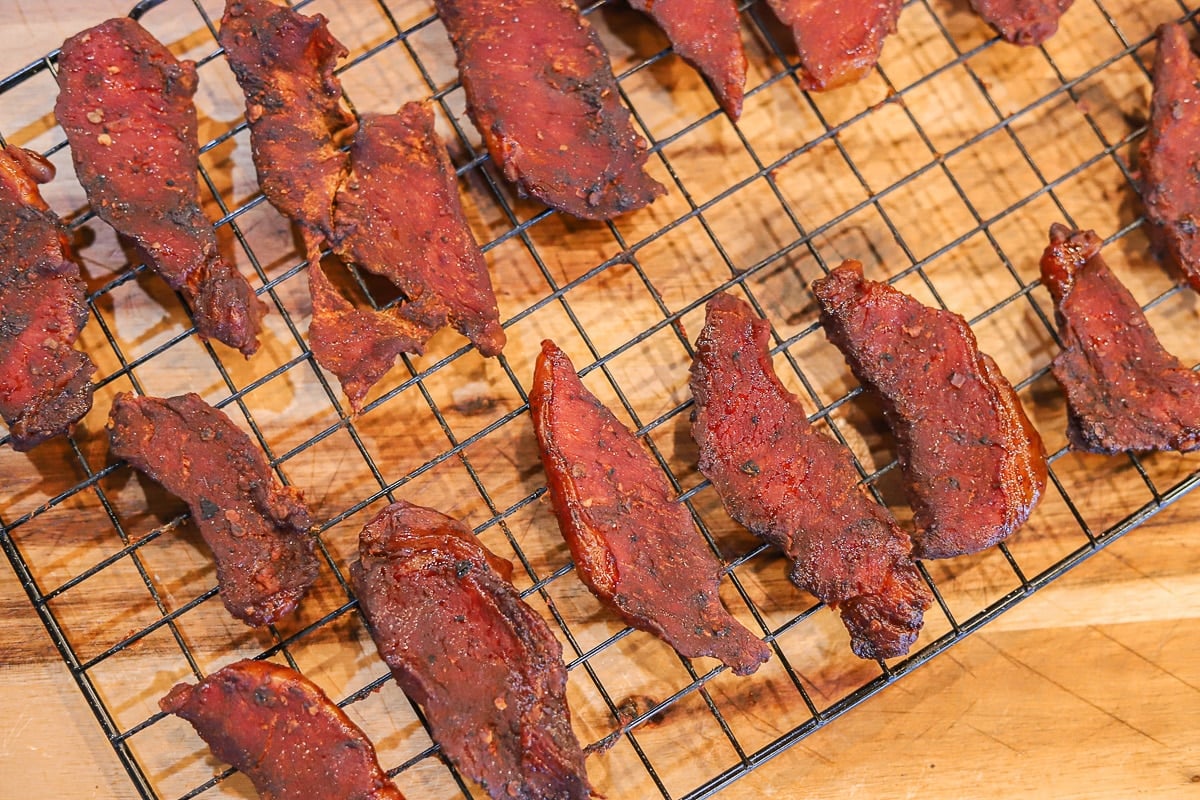


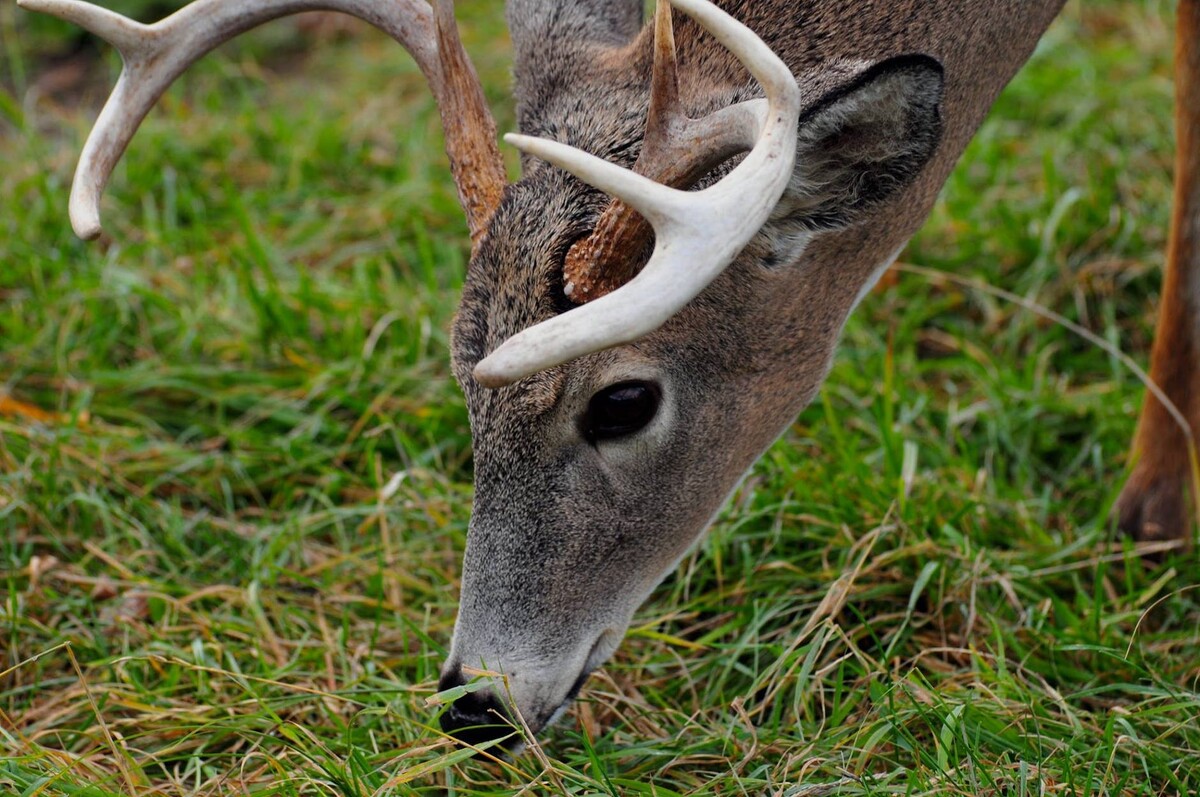
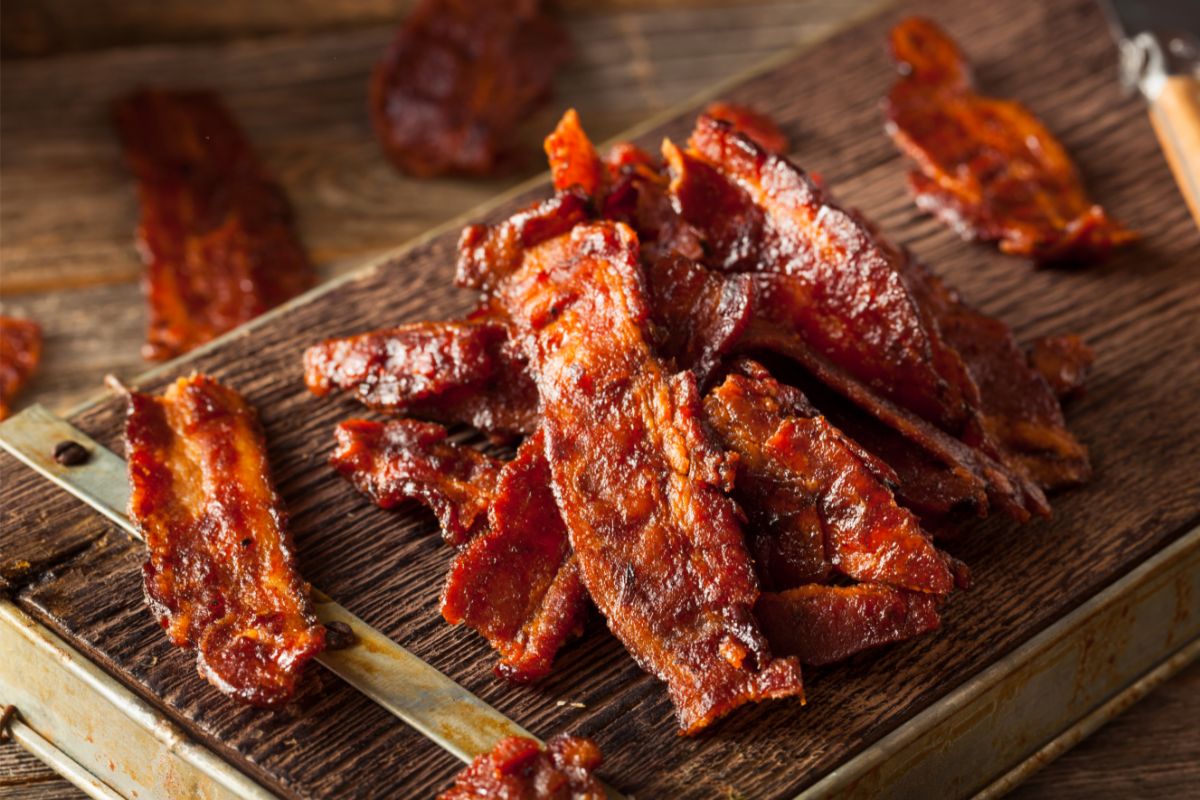
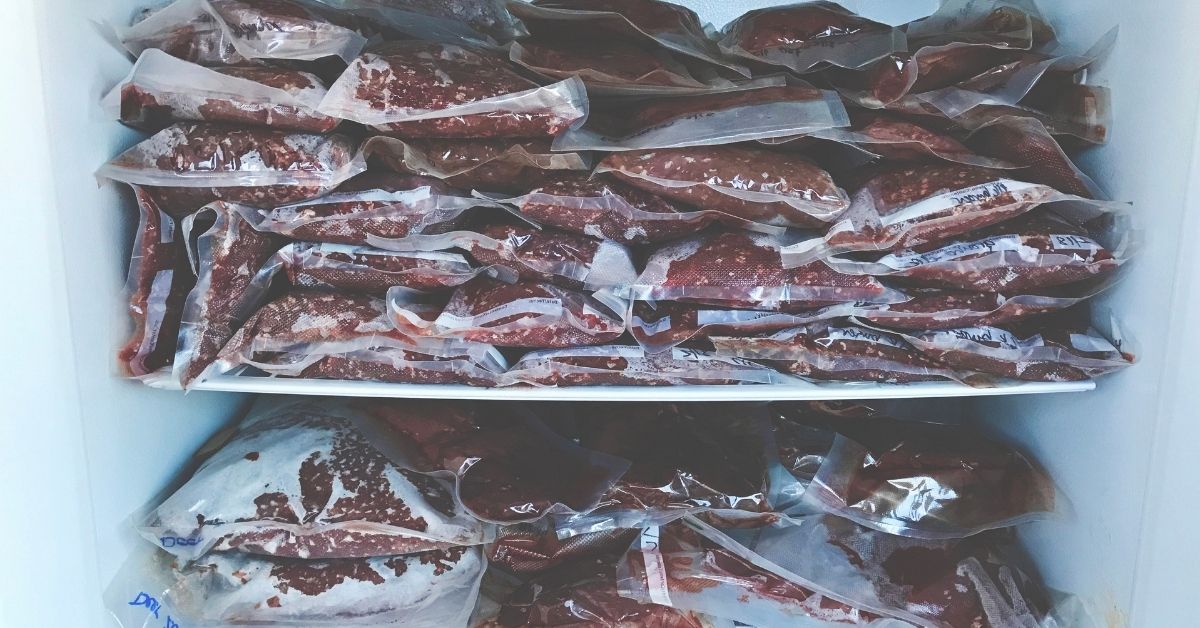
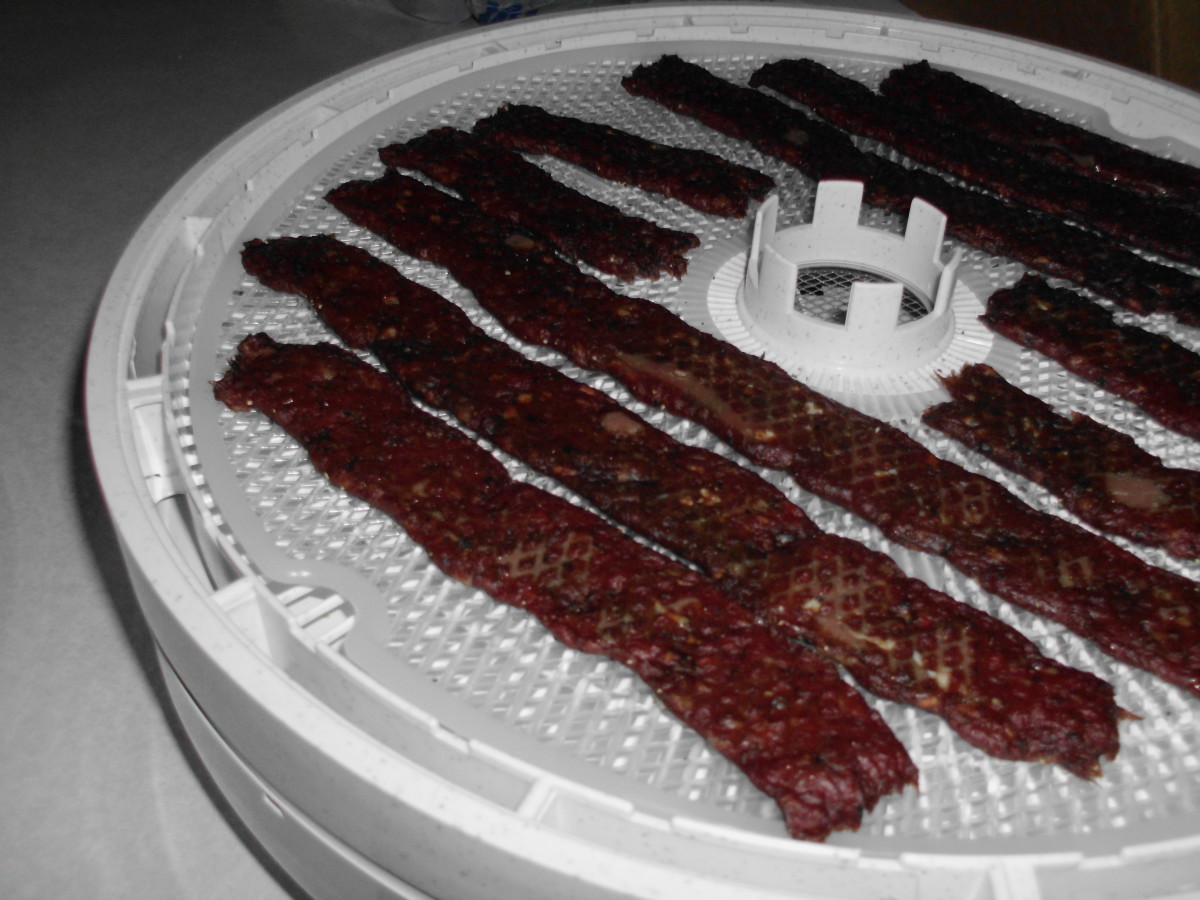
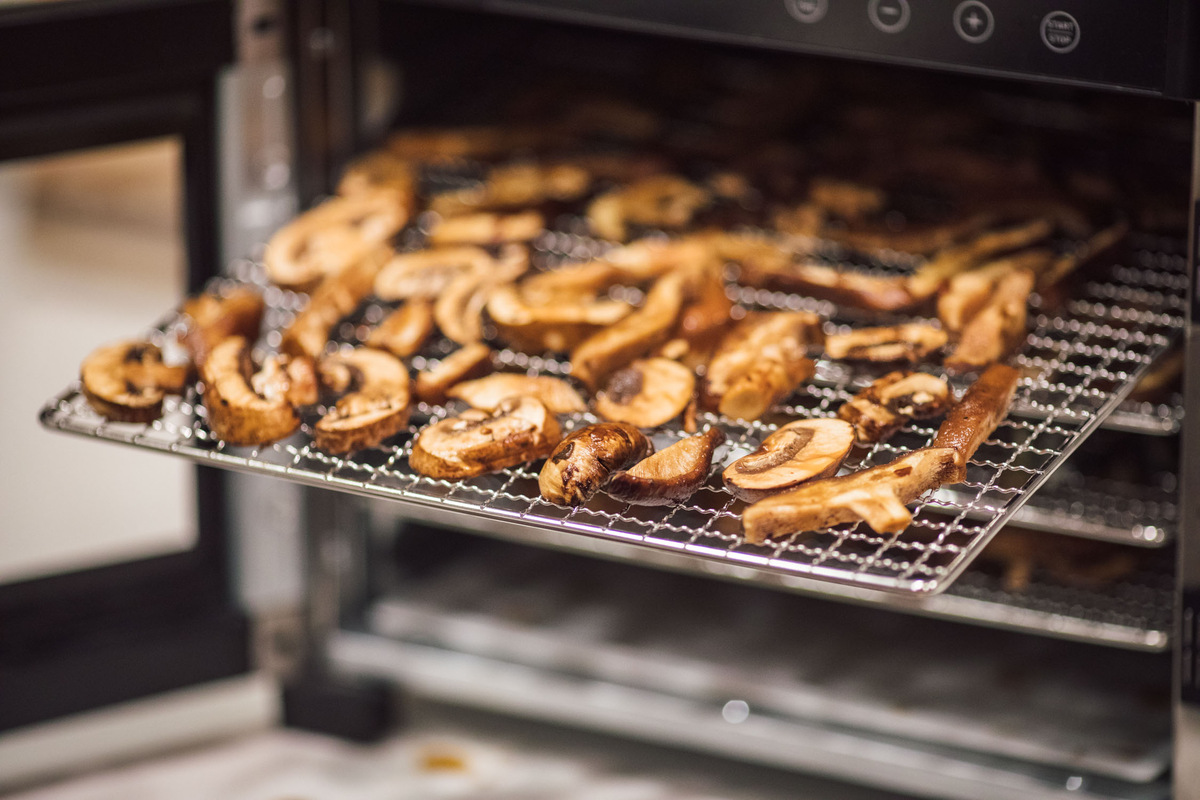

0 thoughts on “How To Store Deer Jerky”